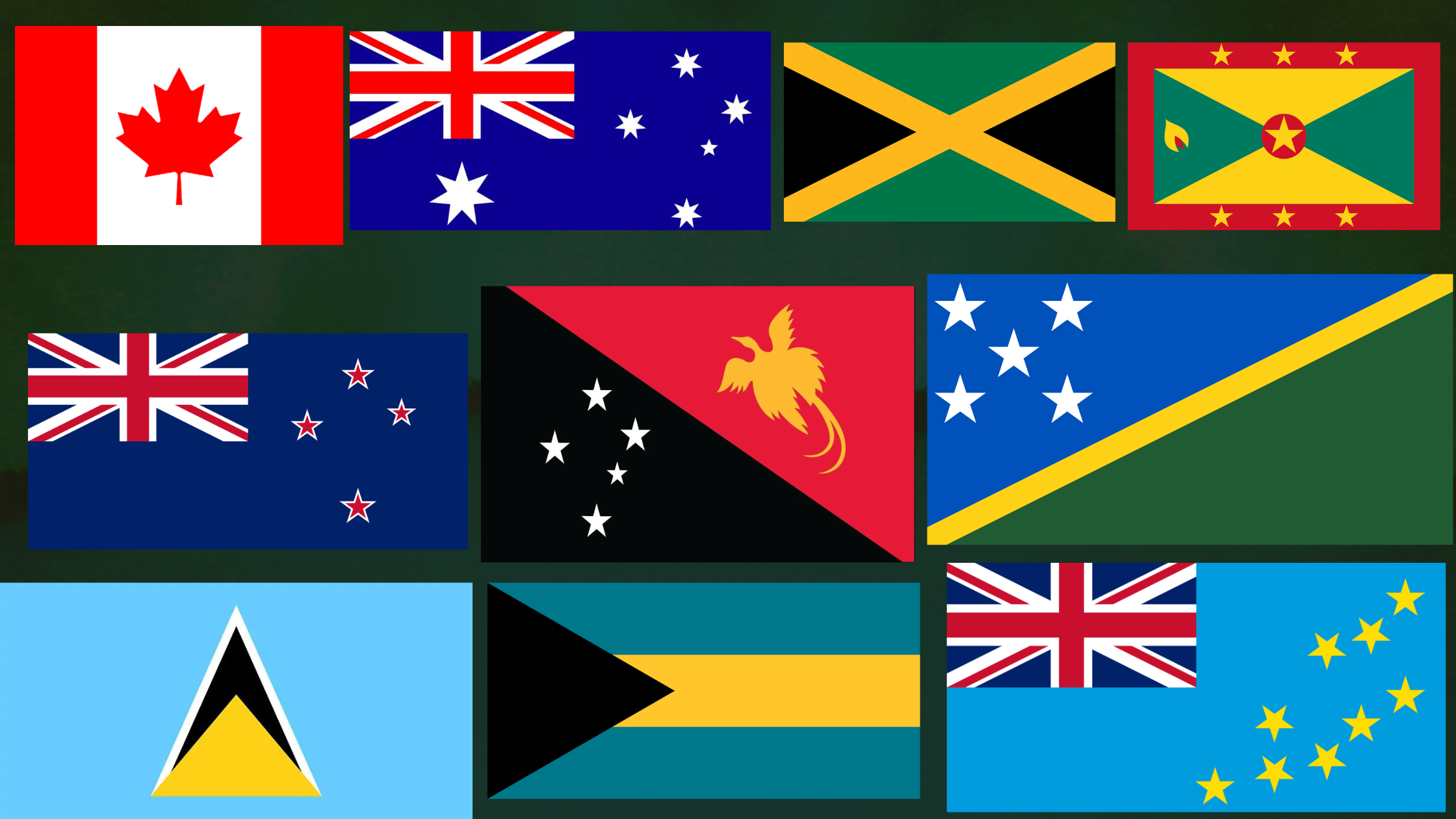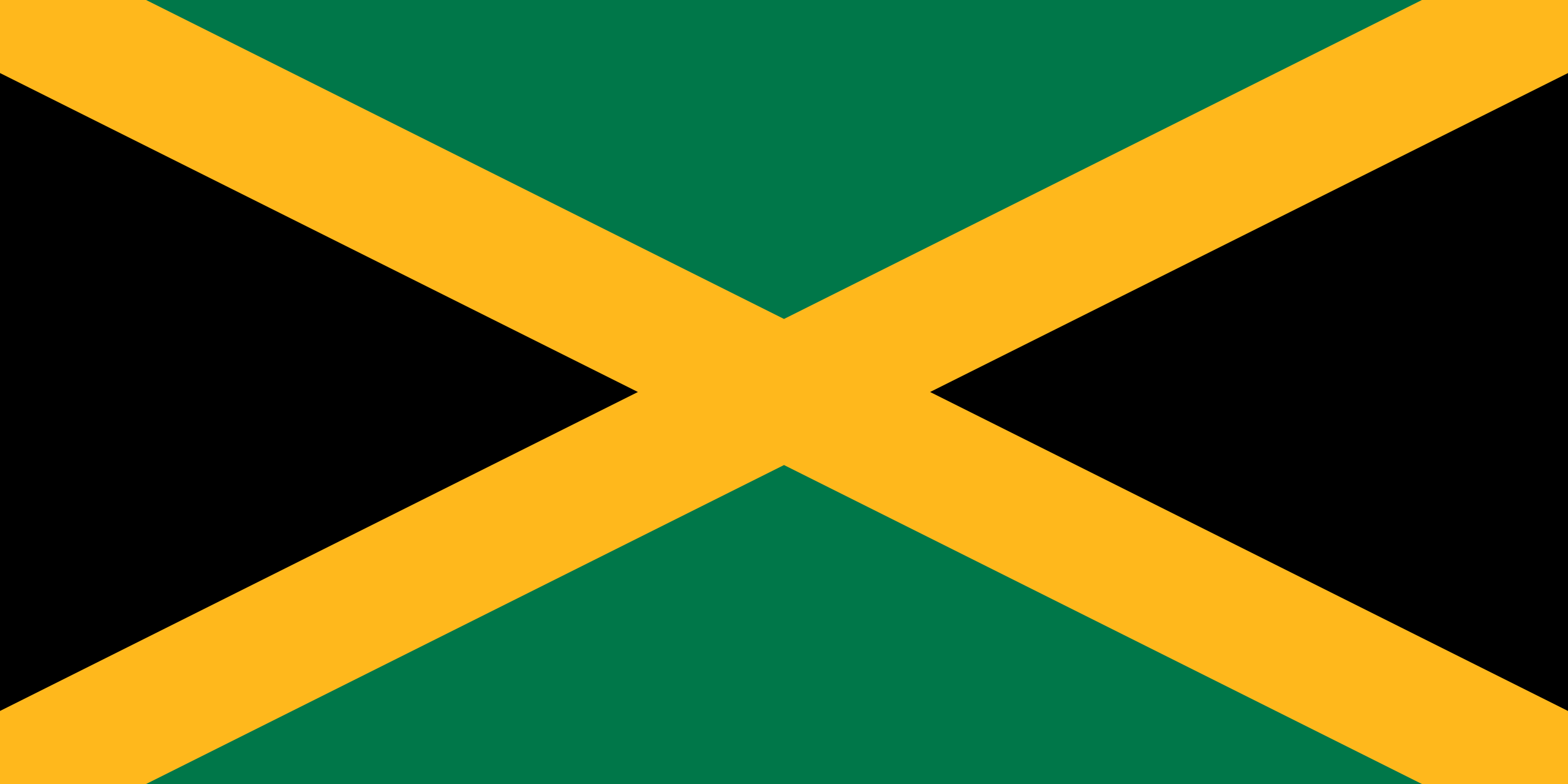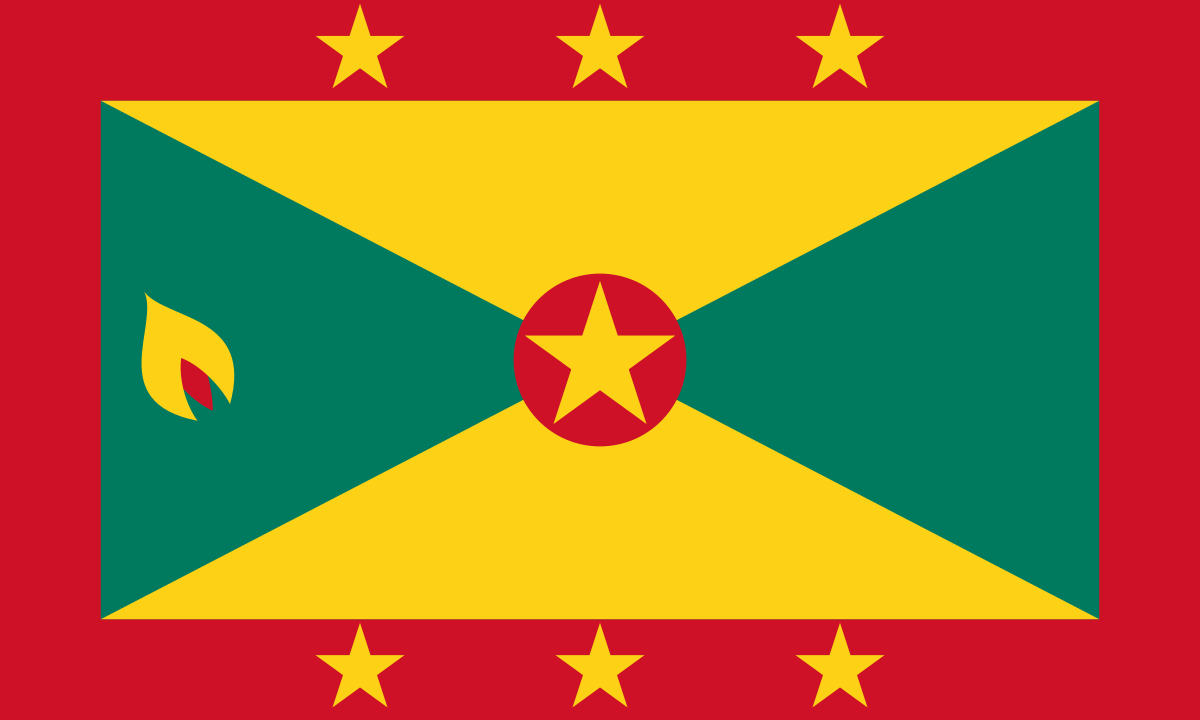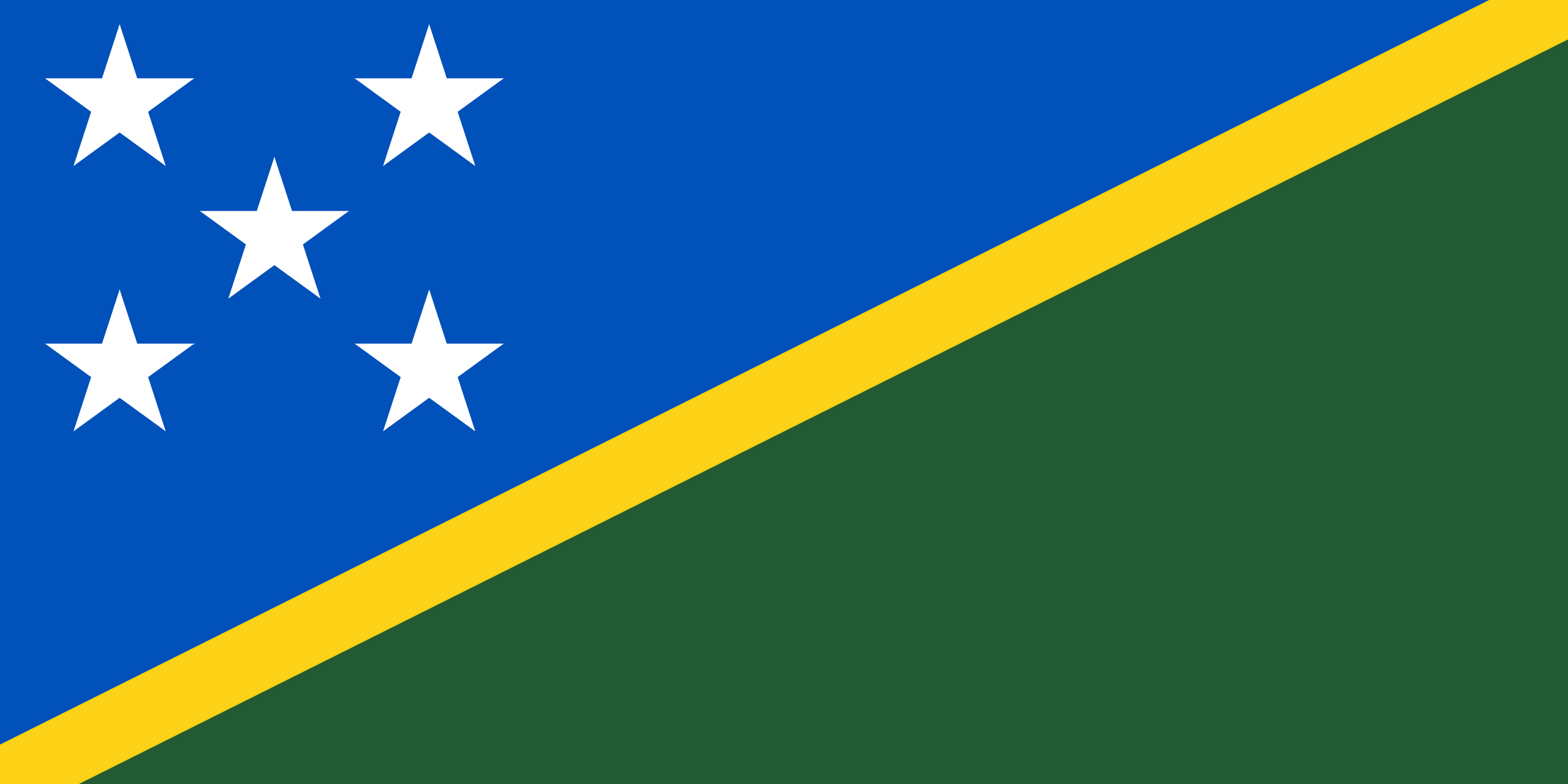Trends
Countries With British Monarchs As Head of State (TOP 10)
There are 15 countries in total including the United Kingdom, meanwhile, countries with British monarchs as head of state are independent on

A lot has changed in the world as we know it today, unlike the past centuries when kings, queens, emperors, and empress are the sole ruler of a particular country, although much has changed from the past centuries we still have countries who still have monarchs and kings as their head of state and United Kindom is one of them and not only that there are countries with British monarchs as head of state that the Queen/King of England reign over.
Meanwhile, these countries with British monarchs as head of state aren’t just anyhow countries, in fact, they are sovereign states, they also have their own constitutions, military arms, and parliamentary seats or whatever the case may be for this state for these countries.
You’ll be surprised at the countries on this list, owing to the fact that such sovereign states still have a head of state from another country. Likewise, it is great to know these countries that will be listed in this list are more than the Top Ten we’ve chosen to discuss, but our focus will be on the Top 10 countries with British monarchs as head of state.
Furthermore, the total number of countries that has a British monarch as their head of state has reduced from 32 when Queen Elizabeth II ascended the throne in 1957 to 15 at the time of her death on September 8, 2022. Well, some of these countries have either gained their independence or have removed the monarch as their head of state. Additionally, the British monarch doesn’t hold real power in some of these states, it is just purely ceremonial, unlike some others where the Monarchy holds absolute power even to dissolve the parliament of such states or install a new prime minister or Governor-General to lead the government.
TOP 10 Countries With British Monarchs As Head of State
Below in this list, we’ll be talking briefly about the countries in the world that are still under British monarchy rule. Meanwhile, we’ll start this list the first but not included it on the main list. The United Kingdom is the first country where the British monarch serves as head of state and it is also the home base of the monarchy. The United Kingdom consists of England, Scotland, Wales, and Northern Ireland.
Now, we go to the main list of the countries with British monarchs as their head of state;
1. Canada
Canada is a nation in North America. It is the second-largest country in the world by total area, with ten provinces and three territories spanning over 9.98 million square kilometers (3.85 million square miles) from the Atlantic to the Pacific and northward into the Arctic Ocean. The three largest metropolitan areas in Canada are Toronto, Montreal, and Vancouver, and Ottawa serves as the country’s capital.
The Royal Proclamation of 1763 created the Province of Quebec which is the second oldest city created out of New France and annexed Cape Breton Island to Nova Scotia which is the oldest city. The Province of Quebec, which was added to the colony of Canada by the Royal Proclamation of 1763 and given the name of Canada, was later renamed the Canadas by the Constitutional Act of 1791.
The British Parliament passed the Quebec Act in 1774, extending Quebec’s boundaries to the Great Lakes and Ohio Valley, in order to prevent a civil war in Quebec. The Quebec Act also granted Quebec special autonomy and self-government rights at a time when the Thirteen Colonies were increasingly protesting British rule.
Canada has a parliamentary system based on a constitutional monarchy, with the monarchy serving as the foundation for the executive, legislative, and judicial branches. King Charles III, who also reigns over each of Canada’s ten provinces and 14 other Commonwealth nations, is the current monarch. Despite the fact that the two institutions are distinct, the monarch of Canada and the United Kingdom are the same people. Canada is one of the oldest countries with British monarchs as head of state
2. Australia
Australia is the second biggest and the first country in Oceania to have a British monarch as its head of state. It is one of the world’s largest nations and the smallest continent, located in the Southern Hemisphere between the Pacific and Indian oceans. Meanwhile, Canberra, Australia’s capital, is situated between Sydney and Melbourne, two of the country’s larger and more significant economic and cultural hubs.
Australia, officially the Commonwealth of Australia, is a sovereign country that includes the Australian continent’s mainland, the island of Tasmania, and a number of smaller islands. It has a total land area of 7,617,930 square kilometers (2,941,300 sq mi). Meanwhile, Australia was initially inhabited by the original natives or dwellers or Aboriginals who are like the red skin Indians who had migrated from Africa, and Mesopotamia thousands of years before the European Dutch explorer came.
Captain James Cook of the British navy explored and charted the east coast in 1770, naming it “New South Wales” and claimed it for Great Britain. It was the first presence of the British in the country Australia we came to now today.
The British government sent the First Fleet, a group of ships commanded by Captain Arthur Phillip, to establish a new penal colony in New South Wales after losing its American colonies in 1783. On January 26, 1788, a camp was established and the Union Flag was raised at Sydney Cove, Port Jackson. This day later became known as Australia Day. Australia may be a country with its own laws and all, but it is still among countries with British monarchs as head of state and the British King have the power to even dissolve the government of Australia and form a new one.
3. New Zealand
The island nation of New Zealand is located in the western Pacific Ocean. Over 700 smaller islands make up its two main landmasses, the North Island and the South Island. By area, it is the sixth-largest island nation, with 268,021 square kilometers (103,500 sq mi). Over the Tasman Sea, New Zealand is located approximately 2,000 kilometers (1,200 miles) east of Australia. Auckland is the most populated city in New Zealand, and Wellington is the country’s capital.
Following a petition from northern Mori, the British Government appointed James Busby as the British Resident in New Zealand in 1832. Protecting British trade, mediating disputes between rowdy European settlers and Mori, and rounding up eluded prisoners were among his responsibilities. The vague United Tribes of New Zealand sent King William IV of the United Kingdom a Declaration of Independence in 1835, requesting protection in response to news of impending French settlement. Captain William Hobson was dispatched by the Colonial Office to establish British sovereignty and conduct treaty negotiations with the Mori.
Hobson proclaimed British rule over all of New Zealand on May 21, 1840, in response to the New Zealand Company’s attempts to found an independent settlement in Wellington and French settlers buying land in Akaroa. The number of immigrants increased after the treaty and declaration of sovereignty were signed, especially those from the United Kingdom.
New Zealand is a constitutional monarchy with a parliamentary democracy. The head of state and king of New Zealand is Charles III. Like the other colonies, the governor-general is the King’s representative. Due to constitutional restrictions, neither the monarch nor the governor-powers general may typically be used without the counsel of ministers. The King of New Zealand and the House of Representatives make up the legislative branch of the government.
4. Jamaica
The Caribbean country is among the countries with British monarchs as head of state. Jamaica is a West Indian island nation. After Cuba and Hispaniola, it is the third-largest island in the Caribbean Sea.
The island was first inhabited by the native Tano peoples, but after Christopher Columbus arrived there in 1494, the island came under Spanish control.
Jamaica is a constitutional monarchy and parliamentary democracy. The King of Jamaica, currently King Charles III, is the head of state, and he is represented locally by the Governor-General of Jamaica. The Jamaican Prime Minister and the entire Cabinet nominate candidates for governor-general, who the monarch formally appoints.
Meanwhile, on the prime minister’s recommendation, the governor-general appoints each member of the Cabinet. With the exception of the reserve powers they can use in certain constitutional crisis situations, the monarch and governor-general primarily play ceremonial roles.
5. The Bahamas
The Bahamas is an island country and nation on the western edge of the West Indies. Meanwhile, The Bahamas, a former British colony, gained independence and joined the Commonwealth in 1973.
The Bahamas’ constitution, which was adopted in 1973 after gaining independence, is based on the Westminster model, or that of the United Kingdom. The House of Assembly and the Senate make up the parliamentary government; the Senate’s authority is somewhat constrained in comparison to that of the House. The British monarch, who is represented by a governor-general, is the official head of state.
The governor-general formally appoints the prime minister as the head of the government. It is the fifth country on this list of countries with British monarchs as head of state, it may be a sovereign state but the British King, King Charles III still holds more than ceremonial power.
6. Grenada
The Bahamas shares its head of state with some other Commonwealth realms and is a member of the Commonwealth of Nations.
Grenada, also known as the Isle of Spice, is a West Indies island nation. It is located in the eastern Caribbean Sea about 100 miles (160 km) north of the Venezuelan coast and is the southernmost island in the north-south arc of the Lesser Antilles. The island is oval-shaped and measures about 21 miles (34 km) long and 12 miles (19 km) wide.
Grenada is governed as a constitutional monarchy, with a governor-general serving as the nominal head of state to represent the British monarch. A prime minister, who leads the majority party in the elected House of Representatives, the lower house of the two-chamber legislature, is in charge of exercising executive authority. On the advice of the opposition leader and the prime minister, the governor-general appoints members of the Senate.
The Cabinet, chosen by the prime minister and composed of his supporters in the House of Assembly, is in charge of exercising executive power.
7. Papua New Guinea
The island nation of Papua New Guinea is located in the western Pacific Ocean. It includes Bougainville and Buka (part of the Solomon Islands chain), and the Bismarck Archipelago (New Britain, New Ireland, the Admiralty Islands, and several others).
Meanwhile, the western half of New Guinea is the second-largest island in the world (the western half is made up of the Indonesian provinces of Papua and West Papua), and small offshore islands and atolls. Southeast of New Guinea, on the Coral Sea, is where Port Moresby, the country’s capital, is situated.
Charles III is the monarch of Papua New Guinea, a Commonwealth realm. Australia, the departing metropolitan power, and the constitutional convention, which drafted the draft constitution, had anticipated that Papua New Guinea would no longer be a monarchy. However, the founders believed that imperial honors had a level of prestige.
It is the second country and seventh member of the commonwealth realm in this list of countries with British monarchs as head of state.
8. Solomon Islands
The Solomon Islands are an island country in Oceania, east of Papua New Guinea and northwest of Vanuatu. There are about 700,000 people living there, and its land area is 28,400 square kilometers (11,000 square miles).
When Captain Gibson, R.N., of HMS Curacoa declared the southern Solomon Islands a British protectorate in June 1893, Britain established its area of interest in the Solomon Islands archipelago. The Solomon Islands campaign (1942–1955) in World War II featured fierce combat between American, British Commonwealth, and Japanese forces, including the Battle of Guadalcanal.
In 1975, the “British Solomon Islands Protectorate” officially became known as “The Solomon Islands,” and the following year, self-government was established. Following the granting of independence in 1978, the name of the territory was simplified to simply “Solomon Islands”. A constitutional monarchy was established in the Solomon Islands at its independence. King Charles III, the monarch of the Solomon Islands, is represented in the nation by a governor-general.
9. Tuvalu
The nation of Tuvalu, formerly known as the Ellice Islands, is located in the western Pacific. It is made up of nine tiny coral islands that are dispersed along a chain that runs roughly from northwest to southeast over a distance of 420 miles (676 km).
Before gaining independence on its own in 1978, Tuvalu was a part of the British Gilbert and Ellice Islands Colony, which included what is now Kiribati (previously the Gilbert Islands).
Although, they may have gained independence like most countries in the commonwealth real they are still being ruled by a monarch who is not among them i.e one of the countries with British monarchs as head of state.
The legislature, which has a legislature structure and is chosen by majority votes, is governed by a parliamentary democracy. There are no political parties; the legislature elects the prime minister.
10. Saint Lucia
Lastly, Saint Lucia is an island country in the West Indies located in the eastern Caribbean Sea, near the Atlantic Ocean. The island was formerly known as Iyonola by the indigenous Arawak people, and later Hewanorra by the indigenous Carib people, two different Amerindian groups. St. Lucia’s largest city is Castries, the current capital, and its second-largest is Soufrière, the island’s first French colonial capital.
The French were the first to set foot on the island. The British seized control of the island in 1814. Saint Lucia was also known as the “Helen of the West” after the Greek mythological figure Helen of Troy because it frequently alternated between British and French rule.
Saint Lucia attained independence on February 22, 1979, and joined the Commonwealth of Nations as a Commonwealth realm. Being a mixed jurisdiction, Saint Lucia has a legal structure that draws from both English common law and civil law. It is the last country on this list of countries with British monarchs as head of state.
Meanwhile, we prepare a bonus for you, including the remaining countries governed by the British monarch who is currently King Charles III
BONUS
- Saint Vincent and the Grenadines
- Belize
- Antigua and Barbuda
- Saint Kitts and Nevis
Countries With British Monarchs As Head of State
A brief summary of the countries with British monarchs as head of state;
- Canada
- Australia
- New Zealand
- Jamaica
- The Bahamas
- Grenada
- Papua New Guinea
- Solomon Islands
- Tuvalu
- Saint Lucia
- Saint Vincent and the Grenadines
- Belize
- Antigua and Barbuda
- Saint Kitts and Nevis










